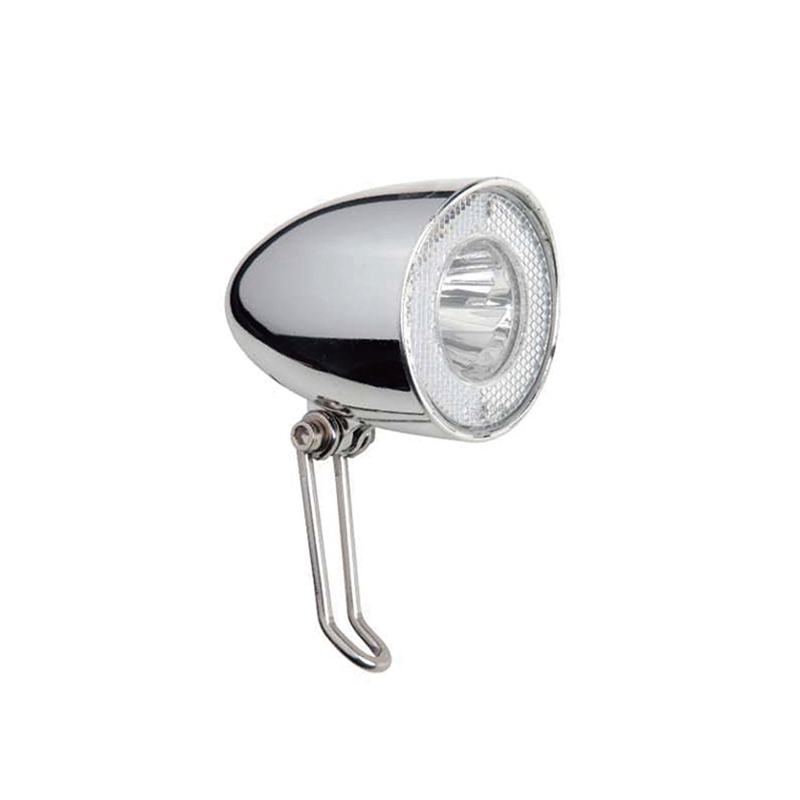暗闇に目を細めていることに気づいたことがあります, あなたの自転車のライトが本当に仕事に至るかどうか疑問に思います? それはよくある懸念事項です, 特に日が短くなり、夜が長くなるにつれて. あなたは尋ねているかもしれません, “どのルーメンバイクライトはそこに安全を保つために必要ですか?” 街の通りを巡航するか、リモートトレイルに取り組んでいるかどうかにかかわらず, 適切なバイクライトを持つことはすべての違いを生むことができます. あなたの乗り物が明るく安全であることを確認するためにあなたが知っておくべきことに飛び込みましょう.

自転車にはどのライトが必要ですか?
それが来たら 自転車ライト, フロントとリアの照明だけではありません. 包括的なセットアップには、視界と安全性のさまざまな側面に応える複数のライトが含まれることがよくあります.
フロントライト
フロントライトは、自転車の照明システムの重要な部分です, 前方の道を照らし、他の人に見えるように設計されています. アルミニウムや高品質のプラスチックなどの耐久性のある材料で作られています, 気象条件や影響に耐えるように構築されています. フロントライトの主な機能は、目の前のパスの明確なビューを提供することです, 低光の状況で安全なナビゲーションを確保します. 通常、ハンドルバーにインストールされます, 直接向上します, クランプまたはマウントを使用して、安全なフィットします.
フロントバイクライトにはいくつのルーメンが必要ですか?
フロントバイクライトに必要なルーメンの数は、あなたが乗る場所に大きく依存します. 街灯での都市サイクリング用, 100-200 ルーメンで十分かもしれません. しかし, 暗い道やトレイルに挑戦する場合, とのライトを考慮してください 500 ルーメン以上. 深刻なオフロード愛好家のために, ライトを超える 1,000 地形の明確なビューを確保するためにルーメンをお勧めします.
背面
後部ライトはあなたの自転車の重要な安全機能です, 後ろから見えるように設計されています. 通常、プラスチックやアルミニウムなどの硬い素材で作られて屋外の状況に耐えるために作られています. 背面の主な機能は、ドライバーや他のサイクリストにあなたの存在を警告することです, 特に低照度または夜間の条件で. 通常、シートポストまたはリアラックに設置されています, 直接後方に向いています, 安定性のためにクランプまたはブラケットで固定されています.
リアバイクライトはいくつのルーメンをすべきですか?
背面の光はフロントライトほど明るくする必要はありません, しかし、それは遠くから見えるはずです. 通常, リアライトの範囲 20 に 100 ルーメン. 市の通勤用, 20-50 通常、ルーメンは適切です, しかし、田舎道でサイクリングしている場合、または視界が低い場合は, 近くにリアライトを選択します 100 ルーメンはあなたの安全を高めます.
サイドライト (オプションですが、推奨されます)
サイドライトは、あらゆる角度からの可視性を向上させます, それらを自転車の照明セットアップに貴重な追加にする. 常に必要ではありませんが, 彼らはあなたの自転車の側面を照らし、ドライバーや他のサイクリストが交差点であなたを見るのを助けることによって、さらに安全を提供します。. これらのライトは通常、軽量で作られています, プラスチックのような耐久性のある素材で、耐候性になるように設計されています. それらは通常、自転車のフレームまたはスポークに取り付けられています, 多くの場合、クリップまたは接着ストリップを使用して、簡単にインストールします.
最も明るいフロントバイクライトは何ですか?
最大の可視性が必要な人のために, 市場で最も明るいフロントバイクライトは、 2,000 ルーメン. これらのライトは通常、極端な条件に使用されます, 夜のマウンテンバイクや周囲の光のないエリアなど. しかし, 他の道路利用者を盲目にすることに注意してください, 明るい通りにいるときは、これらの強力なライトを低いモードまたは調整可能なモードで使用することを検討してください.
ヘルメットライト (オプション)
ヘルメットライトは、可視性と制御の追加層を提供します, 彼らがあなたの視線の方向をたどるとき. これにより、角の周りやフロントライトが届かない場所を見る必要がある状況で特に便利になります。. ヘルメットライトは一般に、緊張を追加しないように軽量です, そして、それらはしばしば強化プラスチックのような耐衝撃性のある材料から作られています. 彼らの主な機能は、自転車の主光を補うことです, 暗いまたは複雑な環境での視界を向上させます. 設置には、ストラップまたは接着マウントを使用してヘルメットにライトを取り付けることが含まれます.
ヘルメットライトはそれだけの価値があります?
はい, ヘルメットライトはそれだけの価値があります, 特に、困難な状況に頻繁に乗るサイクリストにとって. 彼らは特にマウンテンバイカーにとって有益です, 照らされていないエリアに乗る通勤者, そして、コーナーの周りを見るために追加の照明が必要な人. すべてのライダーに不可欠ではありませんが, 彼らは、特別な照明と柔軟性を必要とする人々に大きな安全性の利点を提供します.
ヘルメットライトにはいくつのルーメンが必要ですか?
ヘルメットライトはあなたのメインフロントライトほど強力である必要はありません. との光 200-500 一般的にルーメンで十分です, ヘルメットに重量をかけすぎずに十分な照明を提供する.
ヘッドライト (オプション)
ヘッドライト, ヘッドマウントライトとも呼ばれます, あなたの視野を照らすように設計されています, どこにいてもフォーカスライトを提供します. フロントバイクライトとは異なり, ハンドルバーに固定されています, ヘッドライトはライダーの頭に着用されています, 通常、調整可能なストラップを使用して安全なフィットを使用します. それらは軽量から作られています, 快適さと回復力を確保するための耐久性のある材料. ヘッドライトの主な機能は、暗い条件での視認性を高め、詳細なタスクに追加の照明を提供することです, トレイルのナビゲートやマップの読み取りなど. 彼らは特にハンズフリーの光源を必要とするサイクリストに役立ちます.
最高の自転車ヘッドライトは何ですか?
最高の自転車ヘッドライトを選択するとき, 次の重要な機能に焦点を当てます:
- 明るさとルーメンの出力: ライディング条件に十分な明るさを持つヘッドライトを探してください. 間の光出力 500 そして 1,000 ルーメンは一般的にほとんどの夜のライディングに適しています, ダークトレイルやオフロード条件に必要な出力が高い.
- バッテリー寿命: 頻繁に充電せずに乗り物をサポートできるように、長持ちするバッテリーを備えたヘッドライトを選択してください. バッテリー寿命を延ばすために、複数の輝度設定を備えたモデルを検討してください.
- 耐久性: ロバストから作られたヘッドライトを選択します, 屋外の状況や影響に耐える耐候性材料. 防水性または少なくとも耐水性として評価されていることを確認してください.
- 取り付けシステム: 安全で調整可能な取り付けシステムは、簡単にインストールして安定したポジショニングに不可欠です. ヘルメットやハンドルバーに快適に取り付けることができるヘッドライトを探してください.
- ビームパターン: 優れたヘッドライトは、周囲を効果的に照らすために広くて均一なビームを提供する必要があります. 一部のモデルは、最も必要な場所で光を集中させるために調整可能なビームパターンを提供します.
リフレクター (ライトに加えて)
リフレクターは、低光の状態で乗るときに視認性を向上させるために重要です, 自転車ライトを補完します. アクティブライトとは異なります, リフレクターは、他のソースから光を跳ね返すことで動作します, 車のヘッドライトなど, ソースに向かって戻ります. 通常、反射テープやプラスチックなどの高可視材料で作られています。
リフレクターは自転車のさまざまな部分に戦略的に配置されています: 車輪に, ペダル, そして多くの場合、フレームの前面と後方に. この配置は、あなたが複数の角度から見えることを保証します, ドライバーや他の道路利用者にあなたの存在を警告することにより、全体的な安全性を高める.
バイクホイール用のどの色の反射器?
自転車ホイールのリフレクターは通常、白または琥珀色です. 多くの場合、ホワイトリフレクターは前輪に配置されます, アンバーのものは後部で使用されます. これらの色は暗闇で簡単に見られるために選ばれます, ドライバーにあなたの存在を警告するのに役立ちます.
リフレクターを自転車に置くのに最適な場所はどこですか?
リフレクターを置くのに最適な場所は、ホイールとペダルにあります, あなたがサイクリングするときに動くとき, 見逃すのが難しい動的な反射を作成します. さらに, 自転車の前面と背面に反射器を配置する, 側面と同様に, あらゆる角度からの視認性が向上します.
必要なルーメン自転車ライトは何ですか?
適切なルーメンバイクライトには、ライディング条件を理解する必要があります. 都市部でサイクリングしている場合, のフロントライト 100-200 ルーメンとリアライト 20-50 ルーメンで十分かもしれません. しかし, 農村部またはオフロードのサイクリング用, フロントライトを検討してください 500 ルーメン以上, 少なくともリアライト 50-100 ルーメン. 覚えて, 目標は、他の道路利用者を圧倒することなく見て見られることです.
ナイトライディングに最適な自転車ライトは何ですか?

ナイトライディング用, バッテリーをあまりにも速く排出せずにパスを照らすのに十分なほど強力なライトが必要です. とのライト 500-1,000 ルーメンはほとんどの夜の乗り物に最適です, 明るさとバッテリー寿命のバランスをとることができます. 調整可能な設定のあるライトを探すことができます, 完全な明るさが必要ないときに電力を節約できるようにする.
詳細を知りたい場合, 包括的なガイドについてお問い合わせください バイクライトのためのルーメン? ルーメンのガイド & 用途.
自転車に最適なライトは何ですか? 最高のバイクライトブランドがお勧めします

最高の自転車ライトを選択するには、明るさのような要因を考慮します, 耐久性, および追加機能. 高品質のバイクライトで有名な5つのトップブランドがあります:
- シャイン・スーン: カスタムバイクライトとして 優れた生産プロセスを備えたメーカー, Shineは、特定のニーズを満たすためのテーラードソリューションを提供します. ラベル印刷などのサービスを提供します, 製品開発, 詳細なカスタマイズ, パッケージデザイン. 明確なビジョンがあるか、ブレーンストーミングを支援する必要があるか, 輝きはすぐに境界を押して、好みや仕様に完全に合わせた自転車ライトを作成できます.
- ガーミン: 高度なサイクリングテクノロジーで知られています, Garminは、GPSシステムとシームレスに統合する自転車ライトを提供しています. 彼らは明るいものを提供します, 信頼できる照明と長いバッテリー寿命, 真面目なサイクリストに理想的にします.
- シゴライト: シゴライトは、その革新的なデザインと高性能ライトで賞賛されています. それらの製品は、高いルーメン出力を備えています, 複数のモード, 堅牢な構造, アーバンライディングとトレイルライディングの両方に適しています.
- cateye: サイクリングアクセサリーの信頼できる名前, Cateyeは、耐久性と効果的な光の分布で知られているさまざまな自転車ライトを提供します. 彼らのライトは信頼性が高く、さまざまなライディングニーズのためにさまざまなオプションを提供します.
- レジン: Lezyneの自転車ライトは、明るいLEDと長持ちするバッテリーで認識されています. 洗練されたデザインと強力なパフォーマンスを組み合わせています, 毎日のサイクリストと冒険を求める人の両方に対応しています.
結論
適切なバイクライトは、利用可能な最も明るいオプションを選ぶだけではありません; それはあなたの特定のニーズに最適なバランスを見つけることです. あなたが自問するとき, “必要なルーメン自転車ライトは何ですか?” いつ、いつ乗るかを考えてください. 適切な光は、サイクリングエクスペリエンスを変えることができます, より安全で楽しいものにします. それで, 適切な照明で装備します, そして、自信を持って道やトレイルにぶつかります, あなたが旅が持っているものは何でもよく準備されていることを知っています.























